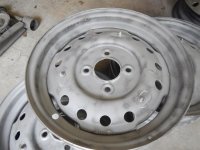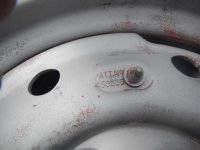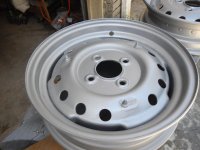JimLaney
Senior Member
Offline
I bought two sprites in pieces. Both are MK IIIs. One was to be the basis of a rebuild and the other a parts car. The problem is that the rebuild started and ended very early in the process 15 years ago and I have boxes of parts from several sources including a 948 engine in pieces. The body has been well repaired and the front and rear suspension and axels installed but all the parts are sporting a patina of rust.
Unsure exactly how to proceed I have begun an inventory using several books on spridgets to identify major system components. I have also begun sorting the many small containers of nuts and bolts into sizes and thread type. In order to proceed I need some basic restoration/rebuild information:
1. What is the best method to clean starter motor, generator and other parts that may contain electrical components while requiring removal of grime and rust?
2. I have a new HF blast cabinet and 50 lbs of 70 grit Aluminum oxide. What parts can I safely use the blast cabinet on without risking stopping up tiny orifices ?
3. Should I remove all the suspension parts assembled 15 years ago, clean them of rust and reassemble? Should I expect the seals that were replaced in the brake calipers and the master cylinder to need replacement since they have never been wet with fluid?
4. I have a 1098 engine block reassembled to include crank, bearings, rods & pistons, front and back plate. I was told that the block and the head had been "surfaced". Must I tear the whole thing back down even though the crank, rods and pistons seem to move smoothly?
5. The head has been protected with tape on the mating surface. The rocker arm assembly was assembled incorrectly and does not want to release the pedestals from the shaft where there appears to surface rust. Must I replace the whole rocker assembly?
6. Should I fit everything together and then remove it again to paint the body a final color or can I finish the body and then begin the re-installation of sub systems?
Your experienced advice would be very helpful to a novice.
Unsure exactly how to proceed I have begun an inventory using several books on spridgets to identify major system components. I have also begun sorting the many small containers of nuts and bolts into sizes and thread type. In order to proceed I need some basic restoration/rebuild information:
1. What is the best method to clean starter motor, generator and other parts that may contain electrical components while requiring removal of grime and rust?
2. I have a new HF blast cabinet and 50 lbs of 70 grit Aluminum oxide. What parts can I safely use the blast cabinet on without risking stopping up tiny orifices ?
3. Should I remove all the suspension parts assembled 15 years ago, clean them of rust and reassemble? Should I expect the seals that were replaced in the brake calipers and the master cylinder to need replacement since they have never been wet with fluid?
4. I have a 1098 engine block reassembled to include crank, bearings, rods & pistons, front and back plate. I was told that the block and the head had been "surfaced". Must I tear the whole thing back down even though the crank, rods and pistons seem to move smoothly?
5. The head has been protected with tape on the mating surface. The rocker arm assembly was assembled incorrectly and does not want to release the pedestals from the shaft where there appears to surface rust. Must I replace the whole rocker assembly?
6. Should I fit everything together and then remove it again to paint the body a final color or can I finish the body and then begin the re-installation of sub systems?
Your experienced advice would be very helpful to a novice.

 Hi Guest!
Hi Guest!

 smilie in place of the real @
smilie in place of the real @
 Pretty Please - add it to our Events forum(s) and add to the calendar! >>
Pretty Please - add it to our Events forum(s) and add to the calendar! >> 





